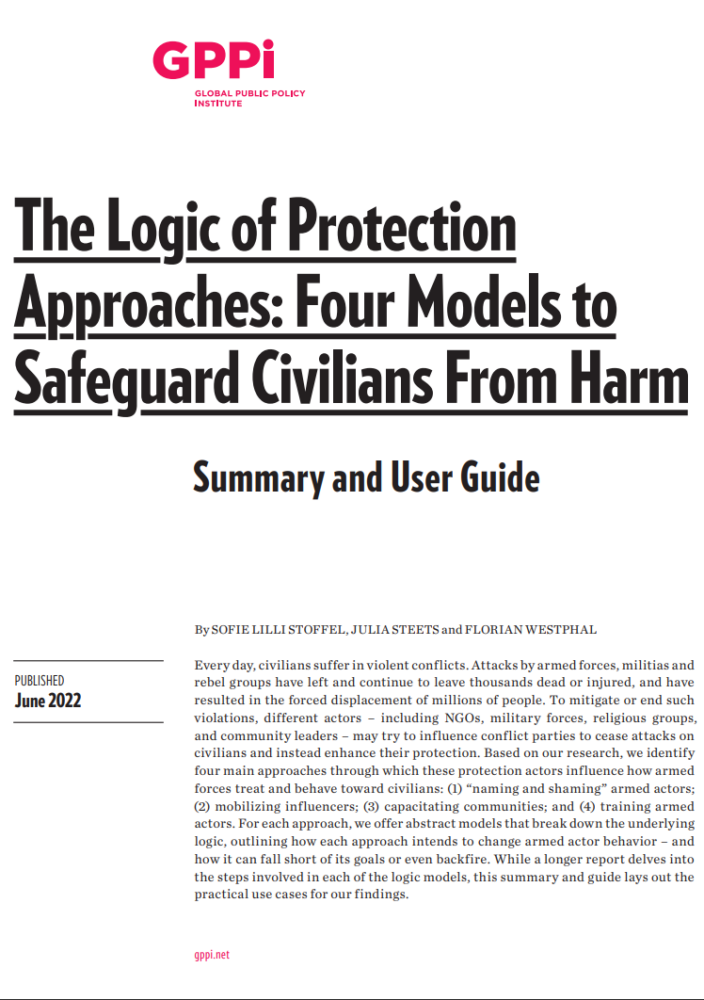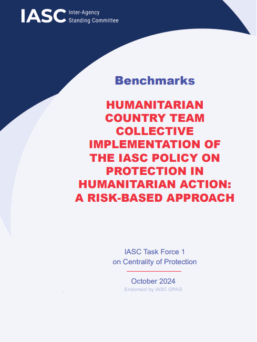In June 2022, the Global Public Policy Institute published a report, “The Logic of Protection Approaches: Four Models to Safeguard Civilians from Harm,” which examined the treatment of civilians by armed actors. The report provides four protection-based approaches to influence how armed actors interact with civilians and the community. Each section is broken down to explain the logic behind the approach, the impact it can have on the armed actors’ behaviors, and how the approach can backfire. The four approaches discussed are (1) “naming and shaming” armed actors (2) mobilizing influencers (3) capacitating communities and (4) training armed actors.
These approaches align with InterAction’s results-based protection (RBP) approach, as they engage “from the perspective of the affected community while encouraging learning and adapting, investing in relationships, and strategic collaboration to achieve protection outcomes.” A common theme among each of these four approaches is to “increase the armed actor’s awareness of the problem and strength its resolve to address the issue”
An In-Depth Look at the Four Protection-Based Models
Naming and Shaming Armed Actors
Armed actors who attach a great deal of importance to their public image and reputation are likely to be particularly sensitive to public criticism
The naming and shaming” approach to protecting citizens from armed actors involves “publicly calling out armed groups or specific governments for their forces’ behavior toward civilians.” The logic behind this approach is that increased pressure from media, public opinion, stakeholders, and influencers would affect the decisions and actions of the armed group in relation to harming citizens. The intervention should allow armed actors’ transgressions to be more visible, provide more evidence of violence against citizens, and encourage a strong reaction from the community and, consequently, from the actors themselves.
Mobilizing Influencers
Mobilizing influencers continue to apply pressure to armed actors through people and organizations who have a significant connection or leverage over the armed actors. Protection actors may mobilize preexisting connections, engage with field workers who have such connections, or hold conferences or workshops in order to build connections with influencers. Influencers may include:
- Foreign/national governments
- International/regional organizations
- Religious communities
- Diaspora communities
- Foreign Private Companies
- Local businesses
- Civil society organizations
- Army/Police
Each of these entities carry a unique type of leverage that can be used to engage with armed actors. Leverage may include financial, resources, weapons and training, political support, sanctions, etc. Similar to “naming and shaming,” the purpose of utilizing such leverage is to influence the behaviors of armed actors by highlighting issue areas.
Capacitating Communities
…empowering communities to take the lead in protection efforts should be a priority
Community based approaches are important because they focus on protection at a local and more intimate level. This will allow the needs and concerns of the community to be voiced and prioritized in a way that other approaches do not. In this case, protection actors may provide resources and fill the role of a facilitator without being directly involved. They will encourage stable communication channels and trust between armed actors and the community, with the hope that armed actors may change their behaviors toward civilians.
Training Armed Actors
The last approach is training armed actors to be more aware of their behavior toward civilians. This can only be accomplished once these actors have acknowledge and accepted their problematic behavior and are willing to initiate a change. (This can be accomplished through the previous three approaches!). Once a level of understanding and trust is attained, trainings may range from humanitarian law to communication skills to combative tactics that minimize civilian harm. Trainings should be tailored to specific situations that the armed actors are likely to encounter, they should be continuous, and informative in emphasizing problematic behavior.
IMPORTANT TO REMEMBER
While these approaches provide four general protection-based models, it is important to remember that each situation is unique. Every aspect of each approach may not be relevant or specific to the situation in question. These approaches should serve as a guide or template on how to protect civilians from harm, but are not a one-size-fits-all approach.
Protection actors have stressed time and again that the chances of success of any effort to influence the behavior of fighters or soldiers largely depends on the specifics of each situation
Westphal et al., 38



